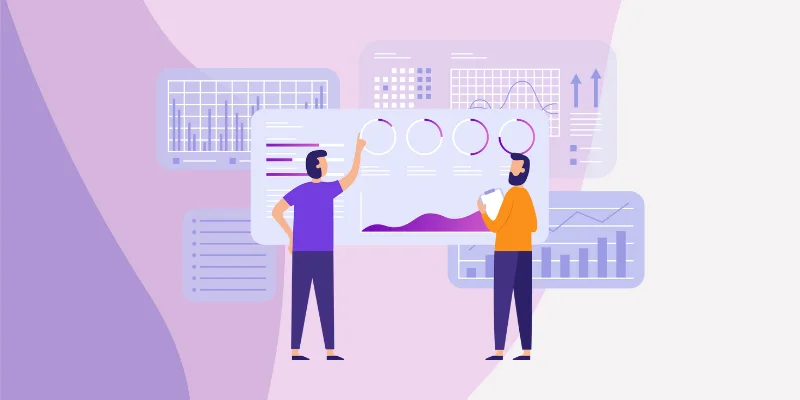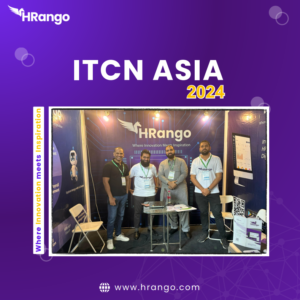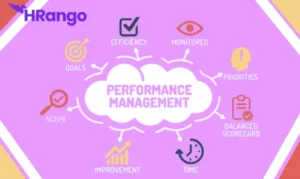Introduction
In today’s business landscape, data is more than just numbers; it’s a strategic asset that can drive decision-making and improve outcomes across all departments. Human Resources (HR) is no exception. HR analytics, powered by data from Human Resource Management Systems (HRMS), is transforming how companies manage their workforce. By leveraging HRMS data, businesses can make informed decisions that enhance employee performance, reduce costs, and align HR strategies with overall business goals. One platform that stands out in facilitating HR analytics is hRango, a leading HRMS solution designed to empower businesses through data-driven insights.
What is HR Analytics?
HR analytics refers to the process of collecting, analyzing, and interpreting HR data to make better-informed decisions about workforce management using tools like hRango. It involves various types of analytics:
- Descriptive Analytics: Focuses on understanding past and current workforce trends by analyzing historical data.
- Predictive Analytics: Uses data to forecast future workforce trends and outcomes, such as employee turnover.
- Prescriptive Analytics: Provides recommendations on how to address potential HR issues based on data insights.
These types of analytics types help HR professionals not only understand what is happening within their workforce but also predict future trends and prescribe actions to improve outcomes.
The Intersection of HRMS and HR Analytics
HRMS platforms like hRango are at the core of HR analytics. These systems capture a wide range of HR data—from employee demographics to performance metrics—organizing it into a centralized database. HRango’s advanced analytics tools then allow HR professionals to analyze this data, uncover patterns, and gain actionable insights.
HRMS data forms the backbone of HR analytics, enabling companies to move from gut-feeling decisions to data-driven strategies. With HRango, businesses can easily visualize data through customizable dashboards and reports, making it easier to spot trends and make informed decisions.
Benefits of Leveraging HRMS Data for HR Analytics
Using hRango for HR analytics offers several significant benefits:
- Enhanced Decision-Making: Data-driven decisions are more accurate and objective, reducing the risk of costly mistakes.
- Improved Employee Performance and Retention: By analyzing performance data, HR teams can identify high performers, recognize patterns in employee turnover, and develop strategies to retain top talent.
- Cost Efficiency and Resource Optimization: HR analytics helps in identifying areas where resources can be optimized, leading to cost savings and better allocation of HR budgets.
Key HR Metrics to Track Using HRMS
To effectively leverage HRMS data, it’s important to track the right metrics. Here are some key HR metrics that can be monitored using hRango:
- Employee Turnover Rate: Measures the percentage of employees who leave the company within a certain period. High turnover can indicate issues with employee satisfaction or company culture.
- Time to Hire: Tracks the average time taken to fill open positions. A longer time to hire may suggest inefficiencies in the recruitment process.
- Employee Engagement Scores: Surveys and feedback tools within HRMS can measure employee engagement levels, providing insights into overall morale.
- Absenteeism Rate: Monitors the frequency of employee absences, which can be a sign of disengagement or health issues.
- Training Effectiveness: Analyzes the impact of training programs on employee performance and development.
HRango: A Case Study in HRMS-Driven HR Analytics
hRango is a prime example of how an HRMS can be leveraged for effective HR analytics. The platform’s comprehensive analytics features allow businesses to turn raw data into actionable insights.
Overview of HRango’s HR Analytics Features:
HRango offers tools such as customizable dashboards, real-time reporting, and predictive analytics capabilities. These features help HR professionals make informed decisions quickly and accurately.
How HRango Enables Strategic Decision-Making:
With hRango, businesses can align their HR strategies with broader business goals. For example, predictive analytics can forecast workforce needs, helping companies plan for future hiring or training requirements.
Real-World Success Stories from HRango Users:
Companies using HRango have reported improved employee retention rates and more efficient HR processes. These success stories highlight the real-world benefits of integrating HR analytics into HR strategies.
Implementing HR Analytics with HRango
To get the most out of hRango’s analytics capabilities, follow these steps:
- Setting Up Your HRMS for Data Collection: Ensure that your HRMS is configured to capture the necessary data, from employee records to performance metrics.
- Customizing HR Metrics and Dashboards in HRango: Use HRango’s customization options to create dashboards that display the most relevant metrics for your business.
- Integrating HRango with Other Business Intelligence Tools: For more advanced analytics, integrate HRango with other tools like business intelligence software to combine HR data with financial or operational data.
Challenges in Leveraging HRMS Data for HR Analytics
While HR analytics offers numerous benefits, it also presents challenges:
- Data Quality and Accuracy: Inaccurate or incomplete data can lead to incorrect conclusions. It’s crucial to maintain high data quality standards within your HRMS.
- Ensuring Data Privacy and Compliance: Handling sensitive employee data requires strict adherence to privacy regulations. hRango includes robust security features to help ensure compliance.
- Overcoming Resistance to Data-Driven Decision-Making: Shifting to a data-driven approach can meet resistance from stakeholders accustomed to traditional methods. Clear communication about the benefits of HR analytics is key to overcoming this challenge.
The Role of Predictive Analytics in HR
Predictive analytics is a powerful tool in HR, enabling companies to anticipate future trends and take proactive measures. Here’s how hRango leverages predictive analytics:
- Predictive Analytics for Employee Retention: By analyzing factors such as job satisfaction, engagement levels, and performance metrics, HRango can help predict which employees are at risk of leaving and suggest interventions.
- Using HRMS Data to Forecast Workforce Trends: HRango’s predictive tools can forecast future workforce needs, helping companies plan for hiring surges or downsizing.
- HRango’s Predictive Analytics Capabilities: hRango’s platform includes robust predictive analytics features that provide actionable insights, helping businesses stay ahead of potential HR challenges.
HR Analytics for Strategic HR Planning
HR analytics plays a crucial role in strategic HR planning by aligning HR goals with broader business objectives. With hRango, companies can:
- Align HR Strategy with Business Goals: Use data insights to ensure that HR initiatives support the company’s overall strategy.
- Drive Workforce Planning and Development: Leverage analytics to identify skills gaps, plan training programs, and forecast future workforce needs.
Enhancing Employee Experience with HR Analytics
HR analytics isn’t just about improving business outcomes; it’s also about enhancing the employee experience:
- Personalizing Employee Development Plans: By analyzing performance data, hRango can help create personalized development plans that cater to individual employee needs.
- Improving Engagement and Well-being through Data Insights: Regularly tracking engagement and well-being metrics allows companies to address issues proactively, creating a more positive work environment.
Measuring the ROI of HR Analytics
To justify investments in HR analytics, it’s essential to measure the return on investment (ROI):
- Cost Savings from Data-Driven HR Decisions: By optimizing HR processes and improving employee retention, hRango analytics can lead to significant cost savings.
- Impact on Business Outcomes and Growth: Data-driven HR decisions can positively impact overall business performance, from reducing turnover costs to enhancing productivity.
Future Trends in HR Analytics
The future of HR analytics is bright, with several emerging trends set to shape the field:
- AI and Machine Learning in HR Analytics: hRango’s AI and machine learning will enable even more advanced analytics, providing deeper insights and more accurate predictions.
- The Evolution of Real-Time HR Data Analytics: As HRMS platforms like hRango continue to evolve, real-time analytics will become increasingly common, allowing for immediate insights and faster decision-making.
Choosing HRango for HR Analytics
hRango is an excellent choice for businesses looking to leverage HR analytics:
Key Features and Advantages of HRango:
- Comprehensive Analytics Tools: HRango offers a range of analytics features, from customizable dashboards to predictive analytics, making it a powerful tool for data-driven HR management.
- Ease of Use: Despite its advanced capabilities, HRango is user-friendly, ensuring that HR teams can easily access and interpret data.
- Strong Customer Support: HRango’s support team is available to help users make the most of the platform’s analytics tools.
Comparing HRango’s Analytics Tools with Competitors:
Compared to other HRMS platforms, HRango stands out for its balance of advanced features and ease of use, making it a top choice for companies of all sizes.
Conclusion
HR analytics is transforming the way businesses manage their workforce, and HRMS platforms like HRango are at the forefront of this change. By leveraging HRMS data, companies can make strategic decisions that improve employee performance, optimize resources, and align HR strategies with business goals. As the field of HR analytics continues to evolve, tools like hRango will become even more essential in driving business success.
FAQs
What is HR analytics and why is it important?
HR analytics involves collecting and analyzing HR data to improve decision-making and align HR strategies with business goals, leading to better outcomes for both employees and the organization.
How can HRMS data improve HR decision-making?
HRMS data provides a comprehensive view of the workforce, enabling data-driven decisions that are more accurate, objective, and aligned with business needs.
What metrics should be tracked using HR analytics?
Key metrics include employee turnover rate, time to hire, employee engagement scores, absenteeism rate, and training effectiveness.
How does HRango support HR analytics?
HRango offers advanced analytics features, including customizable dashboards, predictive analytics, and real-time reporting, helping businesses make informed HR decisions.
What are the challenges in implementing HR analytics?
Challenges include ensuring data quality, maintaining data privacy and compliance, and overcoming resistance to data-driven decision-making.







